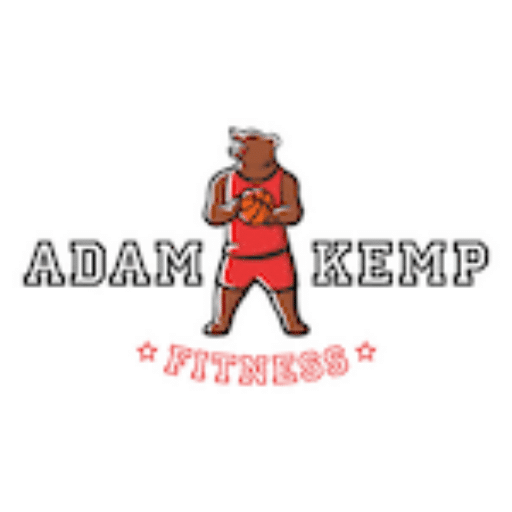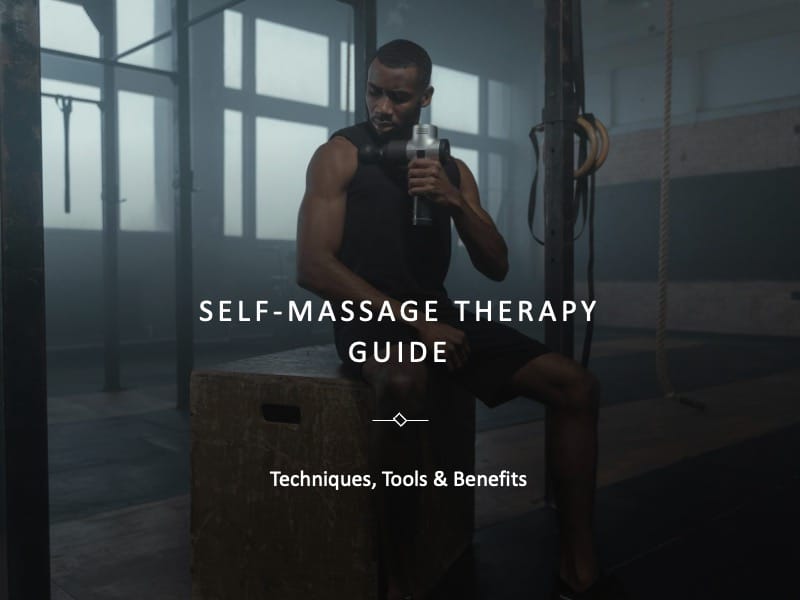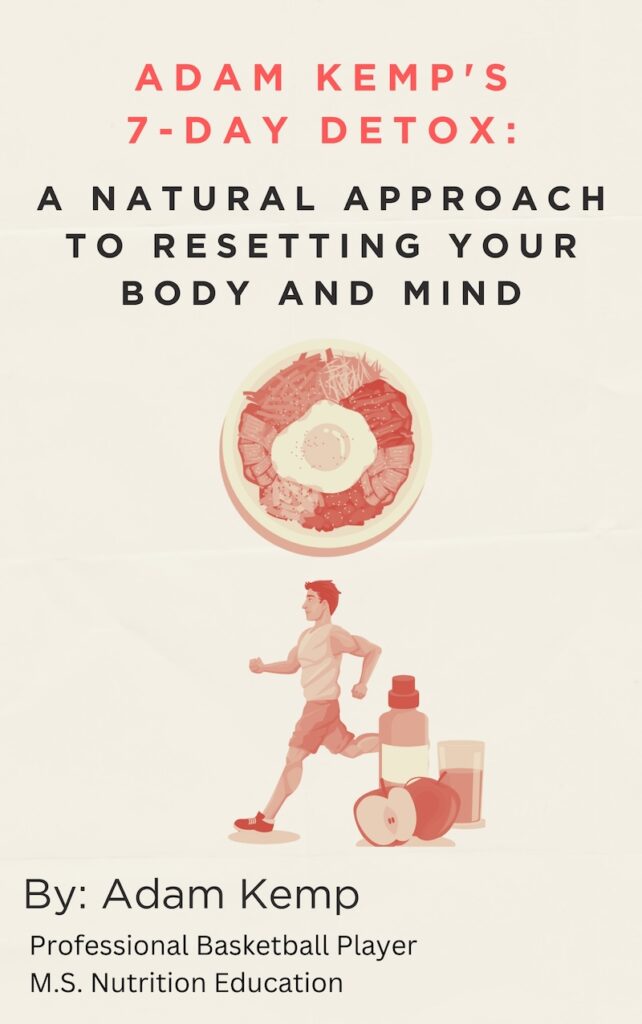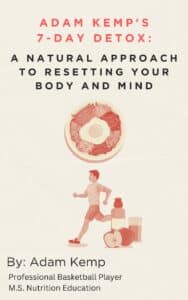Self-Massage Therapy Guide: Techniques, Tools & Benefits
Self-massage therapy is a practical and effective way to manage pain, reduce tension, and enhance relaxation—all from the comfort of your own home.
Whether you’re looking to improve recovery after workouts, alleviate chronic pain, or simply unwind, self-massage can be a powerful addition to your wellness routine.
This guide explores the techniques, benefits, and tools that make self-massage therapy a valuable self-care practice.
What Is Self-Massage Therapy?
Self-massage therapy is a form of massage therapy that involves manually manipulating your muscles, fascia, and connective tissues to reduce pain, improve circulation, and release tension.
Unlike professional massage therapy, self-massage is entirely controlled by you, allowing you to adjust pressure and target specific areas.
With the advancement of tools and techniques, self-massage therapy has become accessible to everyone, from athletes needing muscle recovery to desk workers battling postural strain.
For example, the debate of massage guns vs foam rollers highlights how different self-massage tools can provide unique benefits, depending on whether you need broad muscle relief or targeted deep tissue work.
Benefits of Self-Massage Therapy
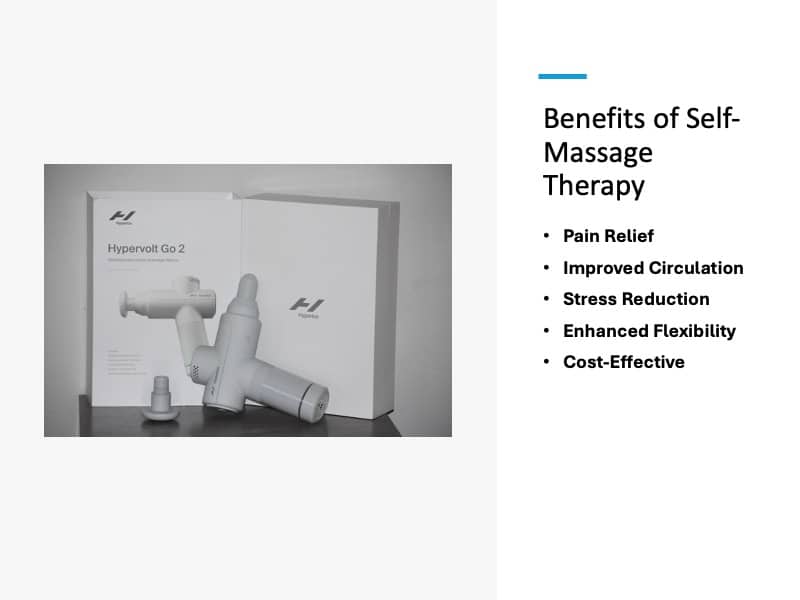
Self-massage therapy offers more than just a moment of relaxation; it is a practical approach to improving both physical and mental well-being.
By addressing muscle tension, promoting circulation, and enhancing recovery, self-massage empowers you to take control of your health.
Whether you’re an athlete looking to optimize performance, someone managing chronic pain, or simply seeking stress relief, self-massage provides a range of science-backed benefits that can transform your daily life.
- Pain Relief: Self-massage helps to release trigger points (knots) and reduce chronic pain by increasing blood flow and releasing tension.
- Improved Circulation: Techniques like rolling and kneading boost blood flow, delivering oxygen and nutrients to the muscles while aiding recovery.
- Stress Reduction: By activating the parasympathetic nervous system, self-massage reduces stress hormones like cortisol and promotes relaxation.
- Enhanced Flexibility: Regular self-massage loosens tight muscles and improves joint mobility, enhancing overall flexibility.
- Cost-Effective: Self-massage tools provide a budget-friendly alternative to frequent appointments with a massage therapist.
Common Self-Massage Techniques
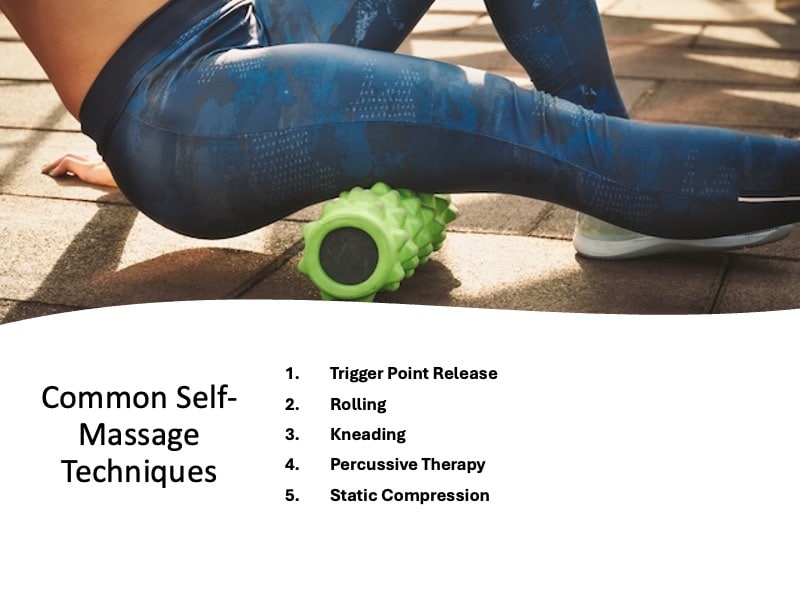
Mastering self-massage techniques allows you to effectively target areas of tension, pain, and discomfort in your body.
From relieving muscle knots to promoting relaxation, these methods are simple yet powerful tools for maintaining your physical and mental well-being.
1.) Trigger Point Release
- Focus on areas of tightness or knots by applying sustained pressure for 30–60 seconds.
- Use tools like massage canes or your thumbs to target small areas effectively.
2.) Rolling
- Roll large muscle groups like the hamstrings, quads, or back using a foam roller or massage stick.
- Apply moderate pressure and move slowly for optimal results.
3.) Kneading
- Use your hands to apply circular motions, similar to a Swedish massage, for areas like the neck or shoulders.
- Ideal for promoting relaxation and reducing muscle tension.
4.) Percussive Therapy
- Employ a massage gun for deeper penetration into muscle tissues.
- Move the device over the affected area for 1–2 minutes.
5.) Static Compression
- Place a ball or roller under a tight muscle and hold still, letting gravity work to release tension.
Self-Massage Tools and Their Uses
Self-massage tools have revolutionized how we approach muscle recovery, tension relief, and overall wellness.
Designed to mimic the benefits of professional therapy, these tools offer targeted solutions for various needs, from deep tissue relief to stress reduction.
With a wide range of options available, including massage guns, foam rollers, and cupping devices, self-massage tools make it easy to customize your care routine and prioritize your health at home.
1.) Massage Guns
Massage guns like the Theragun or Hypervolt Go 2 provide percussive therapy that targets deep muscle tissues. They are excellent for athletes and individuals dealing with chronic tension.
- Best For: Large muscle groups like thighs, glutes, and calves.
- Key Features: Adjustable speeds, multiple attachments, and ergonomic design.
Last update on 2025-07-02 / This article includes affiliate links/Images via Amazon Product Advertising API. I may earn commissions on purchases made through these links.
2.) Foam Rollers
Foam rollers are versatile tools for self-myofascial release. Foam rolling is particularly effective for loosening tight fascia and improving flexibility.
- Best For: Back, hamstrings, quads, and IT bands.
- Key Models: TriggerPoint GRID Foam Roller for durability and textured design.
Last update on 2025-07-02 / This article includes affiliate links/Images via Amazon Product Advertising API. I may earn commissions on purchases made through these links.
For those looking for a high-end foam roller that combines innovation with functionality, the Therabody Wave Roller is an excellent choice.
This advanced foam roller features powerful vibration technology and a wave-textured surface, making it particularly effective for relieving tension, increasing mobility, and enhancing flexibility.
While it excels at targeting smaller muscle groups like the hip flexors, lats, and QL muscles, its compact design and moderate foam density may not provide the same deep tissue relief for larger areas like the quads and hamstrings.
Despite these limitations, the Therabody Wave Roller offers a premium recovery experience that is perfect for athletes and fitness enthusiasts who value cutting-edge wellness tools.
3.) Massage Balls
Massage balls are compact and perfect for focused work on small areas like the feet, shoulders, or glutes.
- Best For: Targeting knots and trigger points.
- Tips: Use against a wall or on the floor for better control. A lacrosse ball works as well. I own the Hyperice Hypersphere massage ball, which has been well worth the investment.
Last update on 2025-07-02 / This article includes affiliate links/Images via Amazon Product Advertising API. I may earn commissions on purchases made through these links.
4.) Massage Canes
Thera Cane massagers allow for precise application of pressure to hard-to-reach areas like the upper back.
- Best For: Relieving upper back and neck tension.
- Advantages: Lightweight and easy to use.
Last update on 2025-07-02 / This article includes affiliate links/Images via Amazon Product Advertising API. I may earn commissions on purchases made through these links.
5.) Acupressure Mats
Acupressure mats mimic acupuncture by stimulating pressure points across the body.
- Best For: General stress relief and relaxation.
- Pro Tip: Use for 10–20 minutes daily for best results.
Last update on 2025-07-02 / This article includes affiliate links/Images via Amazon Product Advertising API. I may earn commissions on purchases made through these links.
Similarly, the LittleMum Trapezius Trigger Point Massager is a specialized tool designed to target chronic tension and trigger points in the neck, shoulders, and upper back.
Crafted from high-quality food-grade silicone, this device provides deep and effective myofascial release to alleviate pain and improve posture.
- Best For: Relieving tightness in the trapezius muscles, addressing tension headaches, and reducing discomfort caused by poor posture or repetitive strain.
Last update on 2025-07-02 / This article includes affiliate links/Images via Amazon Product Advertising API. I may earn commissions on purchases made through these links.
6.) Heat Massagers
Heated massagers combine warmth with kneading motions to relax muscles and improve blood flow.
- Best For: Neck and lower back tension.
- Popular Models: Resteck Neck and Back Massager with heat functionality.
Last update on 2025-07-02 / This article includes affiliate links/Images via Amazon Product Advertising API. I may earn commissions on purchases made through these links.
7.) DIY Cupping Devices
DIY cupping devices modernize the ancient practice of cupping therapy by using suction to lift the skin and underlying tissues. This helps improve blood flow, reduce muscle tension, and relieve localized pain.
Many devices now include features like heat and vibration for enhanced effects.
- Popular Models: The TheraCup, which offers suction, heat, and vibration, making it versatile for recovery and relaxation.
- Best For: Targeting specific areas like the back, shoulders, and legs for pain relief and improved circulation.
- Key Features: Adjustable suction levels, optional heat settings, and portability.
Last update on 2025-07-02 / This article includes affiliate links/Images via Amazon Product Advertising API. I may earn commissions on purchases made through these links.
8.) Pneumatic Compression Boots
Pneumatic compression boots use air pressure to provide rhythmic compression to the legs, helping to improve circulation, reduce swelling, and speed up post-workout muscle recovery.
These devices are particularly popular among athletes for post-workout recovery and individuals with poor circulation.
- Best For: Enhancing recovery after intense exercise, reducing leg fatigue, and alleviating swelling or edema.
- Key Features: Adjustable pressure levels, multiple compression chambers for customized treatment, and portable designs.
- Popular Models: I own the TheraBody JetBoots, which offer dynamic compression patterns for targeted recovery and relaxation.
Last update on 2025-07-02 / This article includes affiliate links/Images via Amazon Product Advertising API. I may earn commissions on purchases made through these links.
How to Perform Self-Massage Effectively
- Warm Up Your Muscles
Start with light movements or use heat to increase blood flow and prepare your muscles. - Find a Comfortable Position
Ensure your body is relaxed and supported. Sit, lie down, or lean against a wall to access different muscle groups. - Focus on Trigger Points
Identify tight spots or knots and apply pressure gradually. Avoid overworking the area to prevent irritation. - Use Proper Technique
- Apply even pressure and avoid pressing too hard.
- Move slowly to allow your muscles to adapt.
- Adjust tools or techniques based on your comfort level.
- Incorporate Breathing
Deep breathing enhances relaxation and helps release tension. - Stay Consistent
Regular self-massage—5–10 minutes daily or as needed—yields the best results.
Tips for Maximizing Self-Massage Therapy
- Hydrate Before and After
Proper hydration aids in muscle recovery and toxin removal. - Combine with Stretching
Follow up self-massage with light stretching to improve flexibility and mobility. - Use Heat and Cold
Heat helps relax tight muscles, while cold therapy reduces inflammation in sore areas. - Listen to Your Body
Avoid massaging inflamed or injured areas and stop if you feel sharp pain.
When to Consult a Professional
While self-massage is effective, certain situations call for professional attention. Seek help if you experience:
- Persistent or worsening pain.
- Limited range of motion despite regular self-care.
- Pain associated with injury or medical conditions like herniated discs or arthritis.
Final Thoughts: How to Add Self-Massage Therapy to Your Routine
Self-massage therapy is a powerful and accessible way to take charge of your physical health and mental well-being.
It allows you to address muscle tension, enhance recovery, and improve relaxation—all from the comfort of your home.
Whether you’re an athlete looking to optimize performance or simply someone seeking relief from everyday stress, self-massage can be a game-changer.
Incorporating self-massage therapy into your routine starts with choosing the right tools for your needs.
Devices like massage guns, foam rollers, and acupressure mats provide targeted relief, while options like cupping devices and heat massagers deliver advanced therapeutic benefits.
Learning effective techniques and understanding how to target specific muscle groups will help you maximize results.
For beginners, starting with simple tools such as foam rollers or massage balls can be a great entry point.
- Consistency is key to reaping the full benefits of self-massage therapy.
- Aim to dedicate a few minutes each day to focus on areas of tension or soreness, either as part of your warm-up, cool-down, or general self-care routine.
Pairing self-massage with other wellness practices, such as stretching, hyhttps://www.adamkempfitness.com/hydration/dration, or mindfulness exercises, can further enhance its effectiveness.
- Finally, self-massage therapy is not just a supplement to professional care—it’s a proactive step toward long-term wellness.
- By regularly addressing muscle tightness, improving circulation, and relieving stress, self-massage can help prevent injuries and maintain overall health.
Making it a consistent part of your self-care routine empowers you to feel your best, both physically and mentally.
This website does not provide medical advice. This website site does contain affiliate links, and purchases may earn a commission.
Read my Medical Disclaimer, Review Disclaimer, and Publishing Policies for more details. Use of this site indicates acceptance of these terms.
